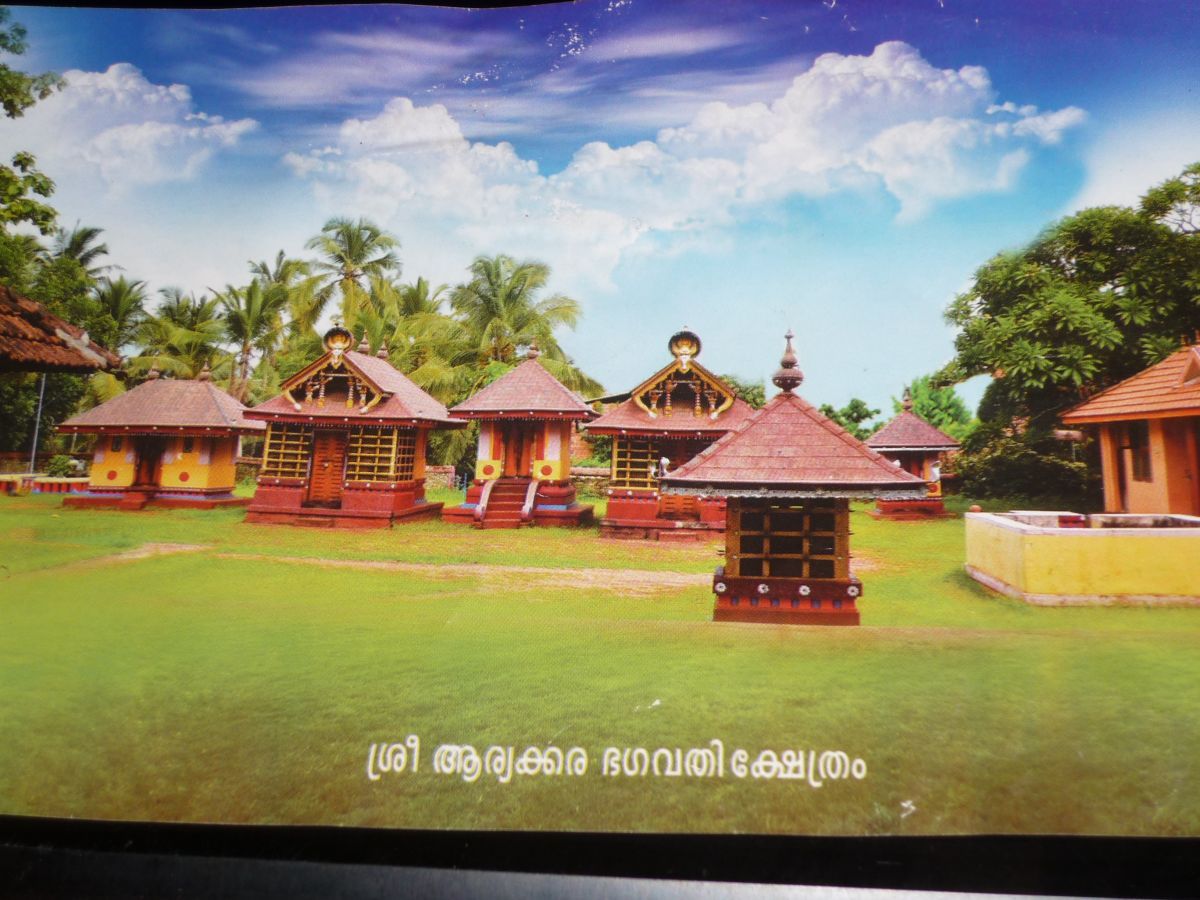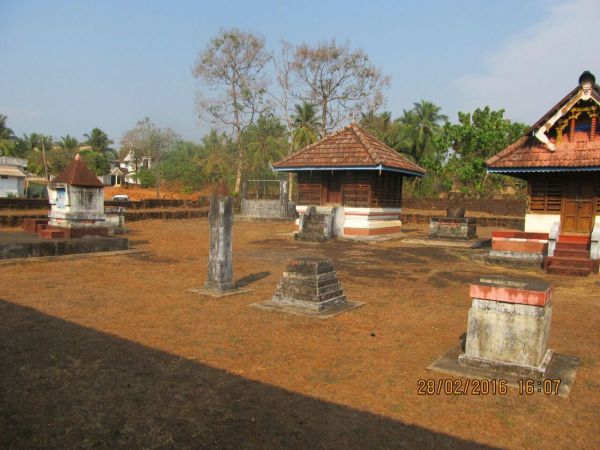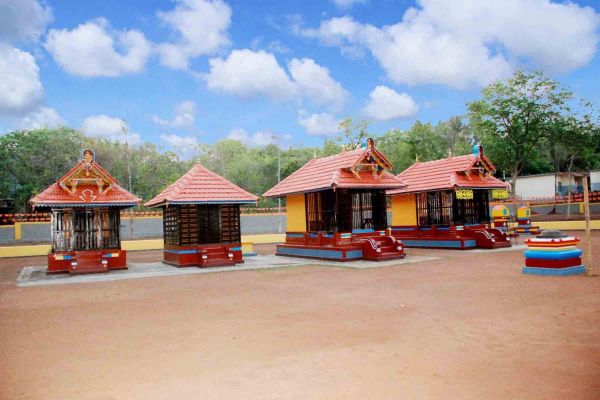Historically and culturally Nileshwara was an important place. In the past it had the impact of both Kannada and Tuluva culture. Local chieftains were ruling members of the Moyar Community , who were working in their lands were worshiping Bhagawathi by creating their own place of worship. It is said that originally local brahmins were worshipping this deity which was later on transferred to Moyars. Madai Moyars, who were doing the job of preparing sandalwood paste which was essential requirment of brahmins for puja, who(moyars) later on were given full charge to worship .
This sthaana is now located near the seashore of Nileshwara town and the main deity here is ARYAKARA BHAGAWATHI. “Paat and Pooram” are the festivals celebrated annually. However Nadavali festival is being celebrated once in some years. During Paat celebrations songs eulogizing Devi-Daivas are being sung by members of the Kaniyar community ,mainly songs narrating the greatness of Devi is sung by them in a specific style. Bhagawathi darshana and Kaalata are the part of the rituals during these occasions. The ritual begins by bringing a lighted lamp and prasadam from a local temple on the first day. This lamp will remain burning throughout the six days of festivities. On the fourth day of the festive Bhagawathi pathries go in a ceremonious procession to the nearby “Talelappa Temple” as a courtesy visit.
Besides this visit ,on the same day of the eve we can see one more ritual visit to a holy place situated amidst the temple that is “Edeyikkad” which is accompanied with representatives from the other three sthaanas . Same as earlier visit Kaniyars will sing in this occation ,a preparation made out of beaten rice and rice by women in the temple kitchen will be offered as Naivedyam on the same day sacrificial offering of fowls will take place. All those who are involved in these rituals will observe “Madi” on all the six days and will eat white rice instead of boiled rice which is usually eaten by coastal people. Again on the sixth day,at a place little away from the sthaanas fowl sacrifice will be held .
“Pooram” is also a festival which is been celebrated for six days. Various rituals are held on all these days. The idols and ornaments are properly cleaned,members of the Shaliyar community sing Pooram songs and dance. On the fifth day. Bhagawathis go to the nearby river for the Pooram bath. On the riverside all the ornaments and finery worn by the pathries will be removed. Then holding their weapons, they take a dip in the river to signify the ceremonious bath. The ritual of fowl sacrifice is held on the sixth day .
“Puthari” is another important festival observed annually. On the occasion, women involved in “Madi” prepare beaten rice from the newly harvested paddy in the kitchen of the sthaana, this prepared prasadam is distubuted to all the dieties in plantain leaves.
Image Source :MBSS
Contents Source : Bhagavathi Aradhane (Dr. Amritha Someshwar) & MBSS



